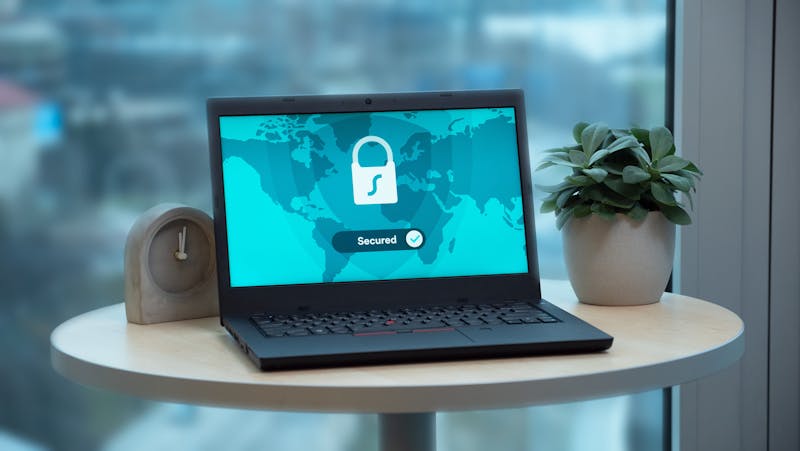Hardware as an IT Service
Hardware is one of the largest expenditures you’ll have as a business and will usually account for the majority of your IT spend. The average business spends 30 percent of its IT budget on tech alone.
Budgets have been strained further with the hybridisation of work. Over the last three years, businesses have been forced to open their wallets to support employees working from home. Desktops–many of which are in perfect working order–gather dust half of the time in the office as employees take their work home on laptops and mobile devices.
It’s sent businesses scrambling to find a happy medium between cost and function. How can you keep your employees equipped to get the job done while optimising hardware spend?
What Is Hardware As A Service?
Hardware As A Service (HaaS) is an offshoot of the much older Software as a Service (SaaS) model. HaaS works on the same subscription basis. Yet instead of only software, providers rent access to the equipment that runs it. Most providers package hardware under an umbrella of services that include everything from installation to troubleshooting and maintenance.
Benefits Of Hardware Services
Approaching hardware as a service benefits businesses in the following ways:
Faster Deployment
Hardware procurement can be an arduous process. Planning, sourcing hardware from different vendors, getting permission for budgets, and installation can take weeks. Businesses have to make sure devices are compatible and work well together, and the technicalities can be difficult to grapple with for organisations with no dedicated IT expert on-board.
With Hardware as a Service, businesses can eliminate the tedium altogether and arrive at a setup that’s fit for purpose and budget. HaaS providers, with their expertise, can integrate new equipment into your operations as quickly and seamlessly as possible.
Flat, Predictable Costs
With IT hardware, it’s difficult to determine if you’re spending too much or too little. There are numerous parts to consider. New machines come up every year promising better performance–it will rarely feel like you’re on the cutting edge for very long.
Hardware as a Service allows businesses to pay only for what they need. HaaS eliminates sky-high capital expenditures and turns it into a manageable monthly bill that stays consistent. No wasting money on idle hardware, no second guessing purchases, and no sticker shock when purchases exceed budgets.
Simplifies Device Management
Employees use a conjunction of desktops, laptops, mobile devices, and Internet-connected peripherals to get work done. For employers, this means dealing with an increasingly long list of vendors to keep devices updated and maintained. Crucial updates can get lost within the complexity, leaving hardware vulnerable to malfunction and cybersecurity threats.
With a HaaS solution, businesses deal with one contract and one vendor. Businesses can rest easy with managed service providers staying on top of security updates and patches. Repairs also fall under a dedicated team, ensuring prompt response to equipment failure instead of businesses having to wrangle help from different manufacturers.
Enables Bespoke Cloud Architecture
Within the sphere of outsourced cloud resources, much of the conversation revolves around software. Next to applications that parse thousands of gigabytes of data, racks and brackets look dull. Most businesses don’t even know where their data is kept, much less care about the hardware containing it.
Yet hardware as a service in cloud computing has the potential to disrupt the outsourced cloud market. Hardware is a major hurdle for businesses who want to create their own cloud-based systems, but don’t have the capital for on-premise servers or hesitate to make the switch due to security concerns. By providing the means, hardware as a service grants small and large businesses alike the ability to develop applications safely within their chosen parameters.
HaaS In Action
There are many types of HaaS offerings, as diverse as the markets that it services. Below are just some examples of how renting instead of buying equipment benefits a variety of industries:
Office Work
In offices, HaaS offerings run the gamut from printers to smartphones. Zoom has begun offering HaaS options to make telecommuting and communications even easier in an increasingly remote-work driven world. HP has been able to leverage its diverse fleet of devices and services to offer all-in-one packages that include everything from printers to notebooks for remote workers.
Retail & Restaurant
The pandemic has hastened adoption of digital and cashless transactions. Two-thirds of consumers now prefer to tap to pay, requiring businesses big and small to redesign the till, a machine that has remained largely unchanged since its invention. Businesses like Square are answering the demand with all-in-one Point of Sale (POS) ecosystems that combine hardware with order management and payment systems.
Telehealth & Healthcare
Over the past couple of years, telehealth has become a viable method of receiving care. Hospitals and organisations can take advantage of HaaS solutions to connect patients and physicians remotely. Phillips is one such manufacturer offering HaaS, outfitting clinics with equipment needed for virtual consults.
Transportation & Logistics
HaaS can simplify fleet management for hundreds of vehicles. Cabs can be installed with devices for easy tracking, booking, and navigation. Taxi company Kabit bundled something even simpler with their software–single buzzer-style buttons installed in nearly 400 businesses. All someone had to do was press a button for dispatch to send an available cab.
HaaS provides an opportunity to significantly reduce upfront costs. Businesses won’t have to waste money on unneeded hardware, or risk getting bottlenecked by older and slower machines once it’s time to scale.
If you want to optimise your spend on equipment while staying on the bleeding edge of the latest technology, EvolvIT can shoulder all your hardware installation and maintenance needs. Book a free consultation today.






